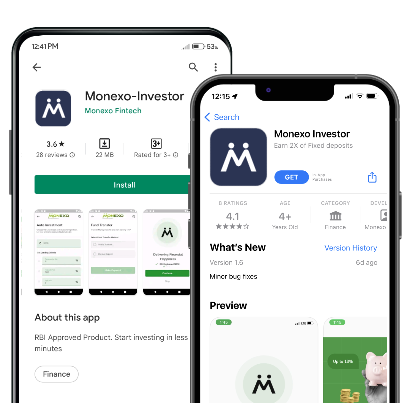P2P lending involves utilising an online platform to connect business professionals in need of loans with other people or organisations who can provide them. Borrowers are typically provided with loans by financial institutions such as banks or credit unions. P2P lending allows borrowers to completely bypass this system, which can often help them obtain funds more quickly. This also allows lenders to earn a return on their investment in another person by accumulating cash through an interest rate. Many online platforms have security features to protect both borrowers’ and lenders’ financial and personal information.
How does P2P lending work?
P2P loans can be either secured or unsecured in nature. If a borrower defaults on a loan contract, the lender will use the borrower’s assets as collateral. Unsecured loans do not require stipulation and are more common in P2P lending because borrowers may lack the necessary assets to serve as collateral. The following are the typical steps in both a secured and unsecured P2P lending process:
- The borrower completes an application. The application is then reviewed and the parameters are determined by the online lending platform, allowing the borrower to view their qualification data.
- The application is submitted by the borrower. Following that, the platform evaluates the borrower and assigns a credit rating based on their credit score. This information is used by the P2P lending company to determine whether the borrower is worthy of investment and then provides interest rate options.
- The lender sends in their terms. After reviewing the borrower’s application, the lender draughts a contract outlining the loan’s terms, including the loan amount, preferred interest rate, and amortization period.
- A lender is chosen by the borrower. If they are presented with multiple plan options for a single loan transaction, the borrower chooses the plan that best meets their needs.
- The borrower receives the funds. Following the signing of the loan contract, the borrower receives the loan funds via an electric wire transfer within a timeframe determined by the lender.
- Payments are made by the borrower. Borrowers are typically responsible for making payments on a predetermined schedule after receiving funds. Once they have completed these payments and cleared their debt, the lender will be able to verify their ability to complete the loan contract.
How are Interest rates decided?
Everyone appreciates a lower-interest loan. But have you ever wondered what factors influence the interest rate on a personal loan? Unsecured loans do not have fixed interest rates. Rates differ depending on the borrower’s ability to repay and credit profile.
The most important aspect of peer-to-peer (P2P) lending is risk profiling. Borrowers with low risk are given loans at lower interest rates, whereas those with higher risk are given loans at higher interest rates.
The risk factor associated with lending to a person is defined by interest rates. Monexo checks repayment history, diligence in making utility payments, and previous loans may all influence his intention and ability to repay.
How to Avail a loan from P2P Market place?
Registration
To obtain a loan from a P2P platform, the borrower must first register by filling out an online form with personal, financial, and professional information. The platform may impose registration fees in order to create a borrower profile. To complete the registration, all documents required by the platform must be provided.
Credit verification
The borrower must specify the loan amount as well as the time frame for which it is required. The P2P institution will perform credit verification once the borrower profile has been created. A credit score will be calculated, and the interest rate will be based on it. The lower the applicable interest rate, the higher the credit score.
Listing of profile
The borrower’s profile is then displayed for prospective lenders to review. The profile will include information such as credit rating, loan purpose, and so on. If the lender is satisfied with the profile, he or she may decide to fund. A loan is typically funded by multiple lenders (four to five).
Disbursement
The loan is disbursed once it has been funded up to 75%. Before that, the borrower and the lender sign a loan agreement. The borrower must provide the required number of post-dated cheques for loan disbursement.
Repayment
The borrower must sign a National Automated Clearing House (NACH) mandate authorising the lenders to debit the borrower’s account with the EMI amount.
Points to note
- The loan agreement is typically a digitally signed agreement that can be viewed by logging into the lender’s or borrower’s profile.
- Post-dated cheques serve as securities for the P2P loan.
Advantages for the borrower
- If you have a good credit score, P2P sites may offer better interest rates than banks and building societies.
- Some websites may provide peer-to-peer loans to people with bad credit. They may also be more willing to lend smaller amounts than banks or building societies, which frequently have a minimum loan amount.
- If you no longer require the loan, some platforms allow you to pay it off early or make an overpayment with no penalties.
- Because the process is done online, it is usually quick and easy.
- You can borrow money for a variety of reasons, including business purposes.
Cons for the borrower
- If you have a bad credit history, you may have to pay a higher interest rate than traditional lenders. If your financial situation is dire, you may not even be eligible for a peer-to-peer loan.
- If you have trouble repaying the loan, you may not have the same level of protection as you would if you borrowed from a traditional lender.
The bottom line is that peer-to-peer lending is another option for borrowing. Borrowers benefit from more options and increased competition. Platforms like Monexo are safe for both borrowers and lenders because they conduct a thorough background check with good knowledge of the borrowers’ creditworthiness and provide an easy and good investment option for lenders.




